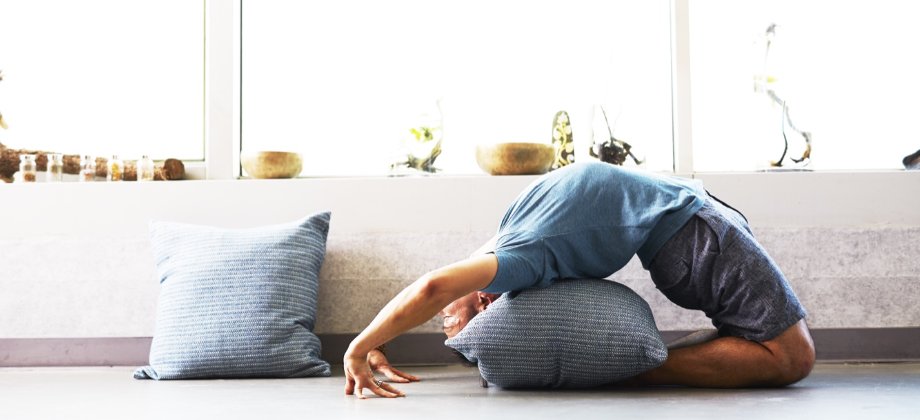
Let's Have Some Fun! The Benefits of Keeping Your Yoga Classes Playful
People come to our yoga classes for all kinds of reasons. Some of our students see yoga as a form of exercise that helps them build strength and flexibility. For others, it’s about relaxing after a long, stressful day. Many come to the mat to get in touch with their inner selves or to stay connected to their spirituality. And others join our classes in order to get to meet other people they have common interests with.
The more we delve into the practice of yoga, we develop awareness in both our body and mind, and slowly get to learn more about ourselves. We come to recognize what is going on in our body, our thoughts, feelings and behavioral patterns on and off the mat. And we get to decide what stays and what needs to change because it does not serve us anymore.
As yoga becomes self-awareness and transforms into a path towards connecting with our authentic self, the more serious we tend to become. And sometimes, we may forget how fun all this was when we first started out as beginners.
We just need to rediscover it and yoga is possibly one of our most valuable tools
But why let that happen?
Our students should be able to enjoy themselves every time they attend one of our classes. After all, this is what will keep them coming back. They need to be able to feel carefree and have fun during class. Especially in this new reality that we are all facing, and the feelings of anxiety, worry and fear it has brought in our daily lives.
Read on as I share my thoughts on how some yoga classes should – now, more than ever – be playful. And how, we as yoga teachers can embrace this kind of attitude in our classes.
Let’s Question our Norms of Yoga
Just because something is established doesn’t necessarily mean that it is the universal truth or better than a different idea. This applies to the yogic social norms as well. They are right for some, but they don’t serve others. So, take a moment to consider in which category your students belong. If the second is the case, don’t hesitate to let go of what is considered to be normal and introduce your own approach.

The Secret to Creating Playful Yoga Classes
The key here is to first stop taking ourselves too seriously. We need to start with adopting a playful attitude ourselves before trying to inspire our students to approach yoga practice as playtime. Try not to be too serious and inspire them to let go and remember what it was like when we were kids
Start observing children around you. They all have a lot to teach us. If you take a moment to watch them play, you’ll see how present and carefree they are. You’ll see them running around and screaming and jumping and doing all kinds of crazy and adventurous things as if there’s no tomorrow. You’ll watch them enjoying every little moment and making a game out of everything.
The truth is that as we grow older, we tend to lose this playful mentality and spontaneity. We tend to step away from our authentic selves. But it’s all in there. We just need to rediscover it and yoga is possibly one of our most valuable tools.
Invite Your Students to See Challenges as Opportunities to Play
We often get to watch our students getting frustrated if they fall out of a balance pose. They get disappointed if they can’t get into a challenging pose like Sirsasana (headstand) or Pincha Mayurasana (forearm balance). They will even sometimes not try them out at all out of fear that they might fall or because they have decided that they can’t make it.
Don’t worry about being perfect and allow yourself to be a little more spontaneous instead
And this is where you as a yoga teacher can make a change. Encourage your students to approach challenging poses with a playful mindset. Give them all the instructions they need to help them make it and offer them variations. But also let them know that it is absolutely fine if they lose their balance. Invite them to laugh and keep trying. After all, this is what happens in real life off the mat too. We find and lose and find our balance over and over again.
Headstands and handstands are a perfect example of yoga asanas that make us face our fears and observe all the thought and behavioral patterns that arise during our efforts. Instead of being too serious when practicing them, encourage your students to have a little fun with the postures. Keeping them safe should be your #1 priority, so make sure you give them all the necessary instructions. And invite them to be playful. Tell them that it’s ok if they fall to the ground. Teach them how to fall if necessary. And encourage them to find the fun in this.
Laugh at Yourself and Encourage Your Students to Lighten Up
Make good use of your sense of humor. Don’t hesitate to make a joke every now and then during your classes. Smile at your students. Don’t worry about being perfect and allow yourself to be a little more spontaneous instead. Have a good laugh every time you make a mistake or lose your balance.
This way you will create a fun and playful atmosphere in class that will also encourage your students to loosen up and enjoy themselves. You will not only give your students the permission to play, but also actually invite them to do so. And this playtime is something we all need – especially right now.
Final Thoughts
There are people who wait all week to come to your yoga class and leave all troubles behind for an hour or so. So, help them do this. Encourage them to celebrate the joy of movement. Invite them to discover the fun in making all kinds of weird shapes with their bodies.
But first, lighten up yourself! And your students will follow.






